The fate of vaping in America is on a cliff-edge and according to America’s leading advocacy group is now in a “dire” state of affairs with vape companies, manufacturers and stores likely to be shutting down in their “droves”.
The Consumer Advocates for Smoke-Free Alternatives Association – CASAA – also told me they are expecting a black market of vape gear and e-liquids to flourish following the legal ruling announced by a federal judge last week. Sadly they believe there’s very little that can be done to change the new legislation meaning vaping as America knows it today is close to being wiped out.
This pessimistic view comes after a federal court judge ruled last Friday that vape companies have just 10 months to submit the so called Pre-Market Tobacco Product Applications [PMTA].
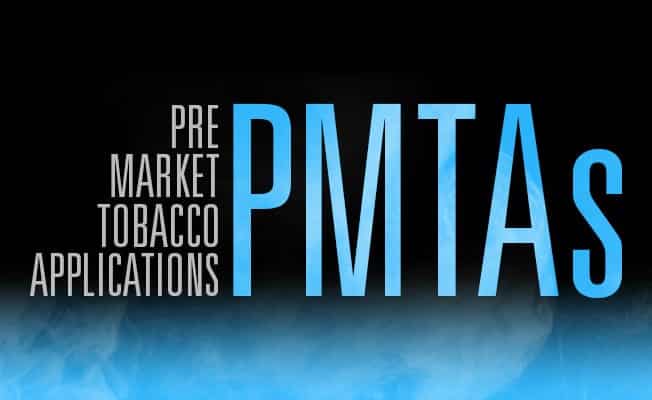
Failure to comply with this expensive and time consuming red-tape will mean NO vape product will be allowed to be sold in the USA without one.
This will obviously have a devastating impact on thousands of vape companies – large and small who simply cannot afford the staggering fees attached to a single PMTA which the FDA says could cost over $460,000 each.
The advocacy group’s media spokesman, Alex Clark, said:
CASAA maintains our belief that a robust underground market will spring up to fill the void created by an overbearing premarket approval process.
As I’m sure you know, the foundation of the vapor industry is hobbyists and entrepreneurs who started selling products to their peers by way of the internet.
Arguably, the consumer-to-consumer remote-sale retail environment never went away and we have every reason to believe it will get bigger once the PMTA deadline takes effect.
It’s worth noting that states where taxes on vaping have been enacted now have a financial stake in preserving a legal marketplace for smoke-free alternatives (the public health message is getting drowned out by the hysteria of youth vaping, so maybe a hit to the pocket book will wake up state lawmakers
OK let’s take a breath, because this is complicated with a few grey areas to say the least.
However, it’s fair to say America is on the brink of losing vaping as a healthier option to smoking. At the very least smokers looking to quit and indeed vapers, will have limited options on what gear they can buy and where.
So how the hell did we get here?
The Road To The 10 Month Deadline
Like all good stories let’s start at the beginning.
Technically, and I stress the word technically, every single vape product be it e-liquid, a coil, a mod or vape tank on the market in the USA since February 15th 2007 should not really be on sale.
Why?
Because they – no matter what it may be – are classed as ‘new products’ and under the Tobacco Control Act placed into law in 2009, all new vape gear needed FDA approval.
Products before 2007 were exempt or ‘grandfathered‘ – therefore untouchable by the new legislation.
However, at that time the FDA gave all manufacturers notice that so called Pre-Market Tobacco Product Applications [PMTA] would need to be filed by 2022. This gave everyone breathing space and the FDA pretty much let anything go into the market place unchecked and unregulated.
Now here’s the kicker and it’s a big one.
Technically – I’m using that word again lol – this means every single vape item from juice to drip-tips released onto the market from February 2007 will now need to go through the lengthy and expensive PMTA process or be removed from sale across the USA.
Now just think of the absolutely mind-boggling cost to a company such as Smok that for the sake of argument has 20 different coils for one tank. Unless they can show each coil is identical in its make-up and performance, they will need a PMTA per coil…staggering to say the least.
Don’t just take my word for it – here’s the current acting commissioner of the FDA, Norman ‘Ned’ Sharpless:
…the important point is that, ultimately, all e-cigarettes that are “new tobacco products” that seek to continue to be sold in the U.S. will have to be the subject of applications to FDA, and those that are authorized to be introduced, or stay, on the market will only receive authorization after undergoing a thorough scientific review by FDA.
Wow…just wow…
Law Suit Blames FDA For Youth Vaping
Cue the first rumblings that vaping was causing an epidemic of ‘youth vapers’ and the then FDA commissioner, Scott Gottlieb, under intense pressure from the vociferous anti-vape crowd pulled the date for submitting PMTA’s to 2021.
This wasn’t enough for the by now hysterical anti-vape groups, such as the The American Academy of Pediatrics and the Campaign for Tobacco-Free Kids, who filed a lawsuit claiming the FDA had caused the so called ‘teen vape epidemic’. They felt that date was basically a dereliction of duty on the part of the FDA and in turn meant the government body was responsible for the alleged teen vape epidemic.
Back in May this year, Judge Paul Grimm agreed and ordered the FDA to act swiftly saying the decision to delay the regulation of all things vape was:
…so extreme as to amount to an abdication of its statutory responsibilities.
Tough words that forced the FDA’s hand and rather than challenging the decision, one of Gottlieb’s last acts was to come up with a solution – that being the 10 month deadline so pushing the submission of all PMTAs to May 2020.
So What Exactly Is A Pre-Market Tobacco Product Application?
Just to recap – in May 2016 the FDA was given the power to regulate e-cigarettes via the PMTA process, known as the Deeming Rule. A year later Gottlieb, as we’ve already seen, pushed the date for filing the applications back to 2022.
This decision was hailed as the ‘saving of the vape‘ by many in the vaping community – though being an old pessimist I urged caution in my article The State of the Vape.
At the time Gottlieb came across as a pro-vaping advocate and said:
Envisioning a world where cigarettes would no longer create or sustain addiction, and where adults who still need or want nicotine could get it from alternative and less harmful sources, needs to be the cornerstone of our efforts.
The ‘alternative less harmful sources’ was at the time a nod towards all things vape. However, looking at those words today, and seeing Gottlieb’s continued attack on vaping, they seem a little hollow to say the least. Don’t forget he’s now on the board of Big Pharma company Pfizer and therefore in open competition with the e-cig industry…things that make you go ummm.
OK, following the so called teen vape epidemic, he pulled that date forward to 2021 however as we’ve seen this was still not enough – the anti-vapers wanted a 6 month deadline – hence the FDA and judges consensus of May 2020.
The FDA describes a PMTA as:
Before a new tobacco product can be legally marketed, FDA must issue an order permitting marketing of that product.
To issue a premarket tobacco product application (PMTA) marketing order, FDA must evaluate that product based on a public health standard that considers the risks and benefits of the product to the population as a whole, including tobacco product users as well as non-users.
The FDA does have draft guidance on filing PMTAs however the jargon is extremely convoluted and packed with wordy legaleeze but in a nutshell:
When you create a new tobacco product or modify a tobacco product in any way, you must obtain an order from FDA authorizing the marketing of the product before the product may be introduced or delivered for introduction into interstate commerce.
This includes “a change in design, any component, any part, or any constituent, including a smoke constituent, or in the content, delivery, or form of nicotine, or any other additive or ingredient.
Don’t forget, any ‘new product’ means those on the market since February 2007!
Manufacturers will fail the PMTA process if:
- You have not shown that the product is appropriate for the protection of the public health
- The manufacturing methods, facilities, or controls do not conform to manufacturing regulations
- The proposed labeling is false or misleading
- Or You have not shown that the product complies with any tobacco product standard in effect
So this is really a lottery where you pays your money after gathering all the scientific evidence you can get to prove your vape products meets the FDA criteria. Fail at any stage and you’ve just lost nearly half a million dollars.
And don’t forget the cost! The FDA says:
…a premarket tobacco application (PMTA) = in the low to mid hundreds of thousands of dollars (around $117,000 to around $466,000), not in the millions of dollars described by some others.
It won’t cost you millions – that’s OK then lol.
So Is It REALLY The End Of Vaping In America?
In a word no – but like all things it ain’t that simple!
As I said at the beginning we’re into a very and I mean very grey area here.
I strongly believe – and have for a while – the FDA regulatory approach to e-cigarettes is designed as a cull of all things vape, or prohibition by the back door, it’s that simple.
The process means that by May next year every single vape product on the US market will need the magical unicorn like PMTA attached to it or be removed from the shelves. Any product post 2007 and any item after the deadline will be allowed to stay on the shelves for 12 months IF, in most cases, a single PMTA has been submitted for that item.
Designed a new tank or had one on sale for 12 years? Pay up – pass the criteria or no sale.
Given the absolute tsunami of individual products that MAY and I stress may have PMTAs submitted, the already snail pace movement of any government department will surely grind to halt leaving a backlog and therefore leaving thousands of items in the grey legal area – or black hole if you like.
Is There Any Way Round Submitting PMTAs?
Sure there’s going to be loopholes and I’m sure the real winners – apart from the swelling of FDA coffers – will be legal teams who are now gleefully sharpening their pencils.
One of the loopholes has been suggested that e-liquid manufacturers club together if you like and submit joint applications – however the FDA was wise to this saying:
Each tobacco product application is a unique situation.
However, generally speaking, a manufacturer could submit one premarket application for multiple tobacco products with a single, combined cover letter and table of contents for each product.
However, when FDA receives a premarket submission that covers multiple, distinct new tobacco products, we intend to consider information on each product as a separate, individual PMTA. Where the same information applies to multiple products, it should be noted.
FDA considers each ENDS product with a differing flavoring variant or nicotine strength to be a different product.
That last sentence kills off any joint enterprises and indeed sadly dooms the smaller e-liquid manufacturers – sad but true. And BTW the FDA says even if your e-liquid is zero nicotine, it will still need to go through the process and judged ‘case by case’.
The FDA does offer Tobacco Product Master Files which are templates covering certain areas of PMTAs.
The FDA says:
In general, and especially over time as manufacturers become more experienced and relevant research develops, the FDA expects many efficiencies to lower the average costs of premarket review.
For example, we expect that manufacturers’ costs will be dramatically lowered by the bundling of applications for similar products; by reliance on tobacco product master files; and by bridging of data from one product to another.
Due to these and other efficiencies, the FDA expects submission costs to vary across products and to diminish broadly over time, thus resulting in lower average costs per product, as reflected in the cost estimates that accompanied the rule.
Still going to be costly – time consuming and as I said a bit of a lottery.
One suggestion has been to cut back on the hundreds of thousands of PMTAs that will need to be submitted for items post 2007 would be to simply move the so called ‘grandfathered’ date forward – that would be the sensible thing. However the FDA is powerless to do this:
Only an Act of Congress can change the grandfather date.
In the proposed rule, the FDA stated it lacks the legal authority to change the grandfather date and specifically asked for the public to comment on this legal interpretation. The agency received a large number of comments in response to this statement, but none provided a legal theory that would support changing the date.
Pod Kits and Flavours First!
The general feeling is the FDA will be tackling pod kits and flavoured e-liquids first, this after all is key to the anti-vape argument who believe [wrongly] it was those that ‘hooked the kids’.
However that doesn’t mean so called open systems such as drippers, RTAs, tanks and mods won’t come under scrutiny as some are saying.
As Sharpless has already stated it’s ALL ‘new products’ coming under the need for PMTAs – so if for instance Vandy Vape releases a new dripper now or after May next year – it will STILL need a PMTA it’s really that simple.
BTW I have noticed a few American reviewers/commentators suggesting JUUL is to blame for this fiasco.
Given they only arrived on the scene a couple of years ago and AFTER the FDA took control of the e-cigarette regulations, that’s a little unfair 😉
One thing is for sure, with the company’s net worth they should be able to afford any number of PMTAs – the question is and given the uproar about them supposedly marketing to kids – will they pass scrutiny?
Our old ‘friend’ Gottlieb doesn’t think so as he said back in June this year:
Juul is in a hard spot to ever get their product approved.
They have so much historical youth use with their product. I don’t know how Juul gets through an application process.
Will China Submit ALL Product PMTAs?
Well, I’ve asked Vandy Vape – Innokin – Smok – GeekVape that question and as yet I haven’t received a reply from any of them. I’ll most definitely try and collate companies thoughts in another article.
I’ve also contacted Ripe Vapes and Element E-liquids – two of the larger USA based juice companies on how the PMTAs will impact their business. Again and as of the time of writing, I’ve had no reply.
I guess they’re as shell shocked as most of America and currently considering the impact all this well have.
Final Thoughts
It’s not the end of vaping in the USA, more like the beginning of the end as we know it now.
There’s no doubt at all the choices available to American vapers will eventually dwindle with a chance of it picking up the deeper into the PMTA process we go.
Of course many will still become savvy and buy from overseas – however here in the UK there’s a robust customs and delivery firm ‘policy’ that appears to check many pieces of vape mail slapping on huge fees – I’m sure the American counterparts will become savvy to that!
As I said at the start CASAA paints a bleak picture for the future of vaping in the USA, Alex told me:
Arguably, the “Golden Age of Vaping” ended when the FDA finalized their tobacco deeming rule in May 2016.
Even though there are retailers and manufacturers that continue to make new vapor products available to American consumers, the regulations had a chilling effect on innovation and consumer choice.
As enforcement of the PMTA deadline draws closer, we expect nearly all manufacturers will be scrambling to get their products into international markets or making plans to wind down their operations.
Retailers will also be hit with the prospects of breaking leases early as being able to stock their shelves with a diversity of e-liquid will become difficult.
Making things more complicated (and dire) is the recent ruling from Judge Paul Grimm regarding the AAP v. FDA lawsuit.
Judge Grimm adopted the 10 month timeline for PMTA enforcement suggested by FDA in response to the complaint from AAP.
While the language of the order implies that FDA will maintain some enforcement discretion, the fear of being shut down–and the inevitable action by FDA actually ordering vapor businesses to stop making or selling products–will likely be enough to spook industry stakeholders and consumers. (Who wants to sell or even switch to a product knowing that it may not exist soon?)
It is not certain if FDA will appeal the decision. Considering that the court adopted some of the FDA’s suggested remedies, it is suspected that an appeal is unlikely.
As for streamlining the premarket approval process to make it more accessible to smaller vapor manufacturers, if the FDA’s recent final guidance to industry is any indication of how things might change, it’s fair to say that progress in this matter is moving at a glacial pace.
It is more likely that we will see companies shutting down in droves before we see any movement from FDA to make the process more appropriate for open systems–the most enjoyable/effective vapor products.
It’s also fair to say that all of the emotion surrounding youth use of vapor products will prove to be a substantial barrier to approval for even the richest companies. Former FDA Commissioner/current Pfizer board member, Scott Gottlieb said as much in a recent Wall Street Journal op-ed.
“Stopping the process” is not really something that’s on the table.
Although there are lawsuits seeking such an outcome, to date, no such effort has been successful.
It is possible that the PMTA process becomes more clear once applications from a couple of well-healed companies are accepted by FDA, but again, any progress is likely to come at a glacial pace.
In the meantime, millions of people who still smoke will be discouraged from switching, and those who do switch will find it challenging to find products that work best for them.
Like I said, a very despondent view from one of America’s largest vaping advocacy groups.
Sad times indeed for America’s vapers, and of course smokers looking to quit, and absolutely devastating for many of the smaller vaping manufacturers and of course vape shops who will simply go out of business.
This has been on the cards since 2016 and even without the judge’s ruling, PMTAs would have still come into force by 2022 or 2021 – but that sadly doesn’t make it any easier to swallow.
Sad times indeed and there’s no doubt smoking rates and therefore death rates from tobacco related diseases will grow like wildfire.
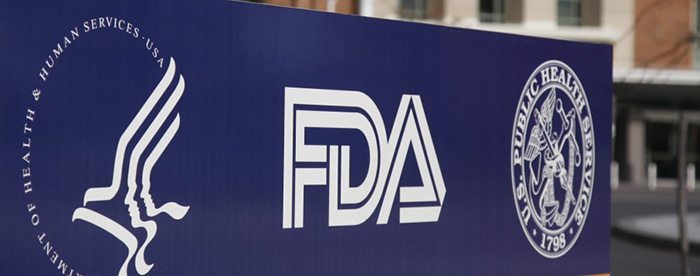

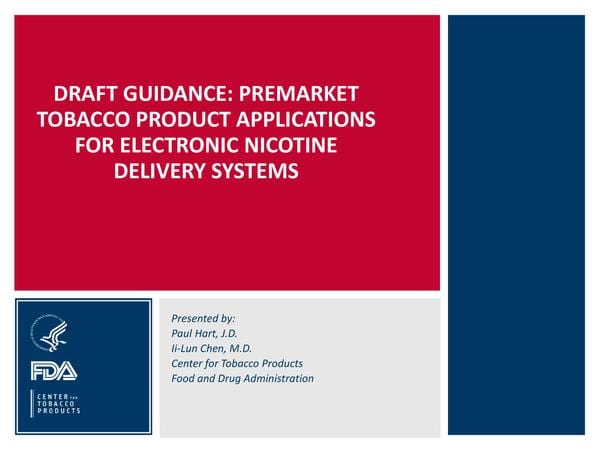
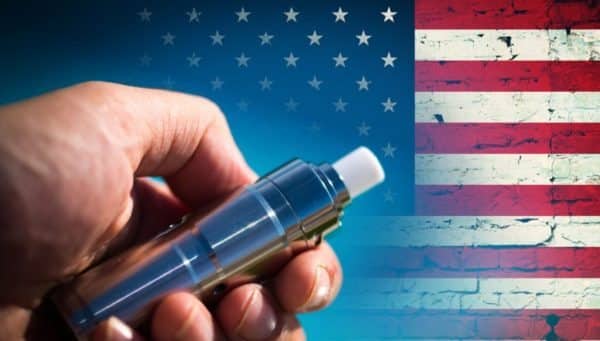
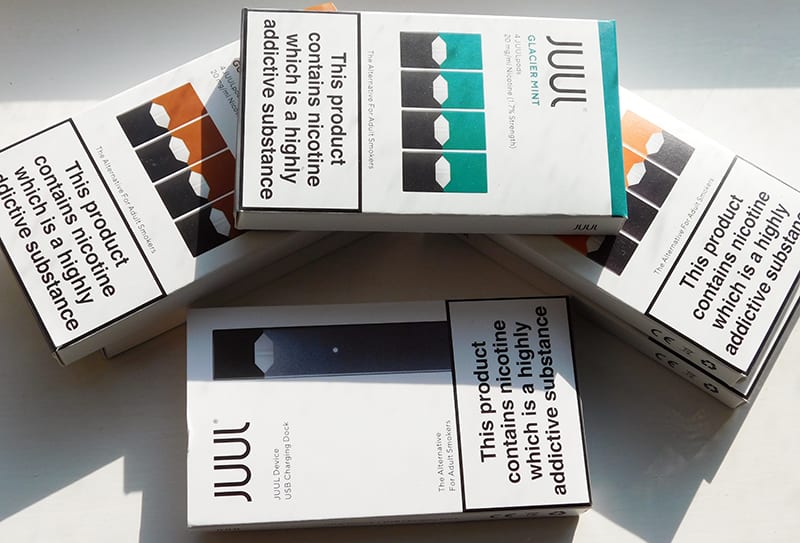
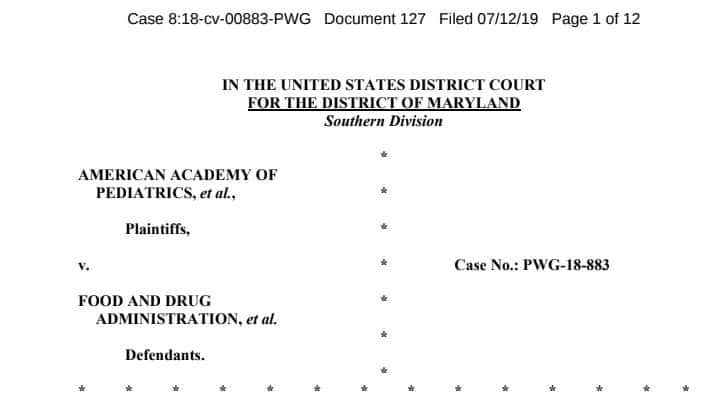

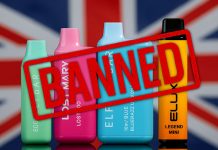





Back in November 2010, FDA held a briefing for the small cigarette manufacturers on the upcoming SE rules and expected deadlines. Most left the meeting complaining that there was no way they could comply and were going to close their businesses. FDA issued SE guidance on January 5, 2011, with a deadline of March 22, 2011. Within the next few weeks, my “order book” was filling rapidly as those who said they would shut down changed their minds and sought my help. I was scrambling to get scientists and clerical staff to help me (at the same time, I was a member of TPSAC, and had several trips to DC for meetings as well as on-site visits to clients’ factories). By early March, I had to stop taking orders as I had all available resources committed to clients who had already signed contracts, paid their deposits and signed up for work. My team and I were able to get enough submitted to the FDA for each client that none of them got shut down by the FDA and all eventually got SE’s for their products. Only exception was one manufacturer that was shutdown because of prior legal trouble.
It looks like the same thing is happening with the small e-liquid manufacturers along well as the small shisha and cigar manufacturers. Everyone appears to be listening to the propaganda from businesses that probably have never touched a touched a tobacco or vaping product in the past about how they can do PMTA’s for people at very exorbitant costs. Just about all of those advertising such services have never been to a Tobacco Science Research Conference (very heavily e-vapor these days), a CORESTA meeting, or joined the US TAG to ISO TC126 (how the US votes on proposed ISO standards — FDA/CTP is a member because the Agency likes ISO standards). Moreover, they don’t read the relevant scientific literature, and rely on the FDA PMTA guidance. That is like the blind leading the blind.
PMTA’s and SE’s can be done for much less cost with the right scientific and legal help. Much of the attack on vaping and the FDA’s views on vaping come from bad science. The same was true when the FDA rejected SE reports. So, if you are in need of a PMTA for e-liquids or disposables or need to get SE’s for your sisha, pipe tobacco, and/or cigar products, please let me know.
Thanks you so much for this comment – extremely informative 🙂